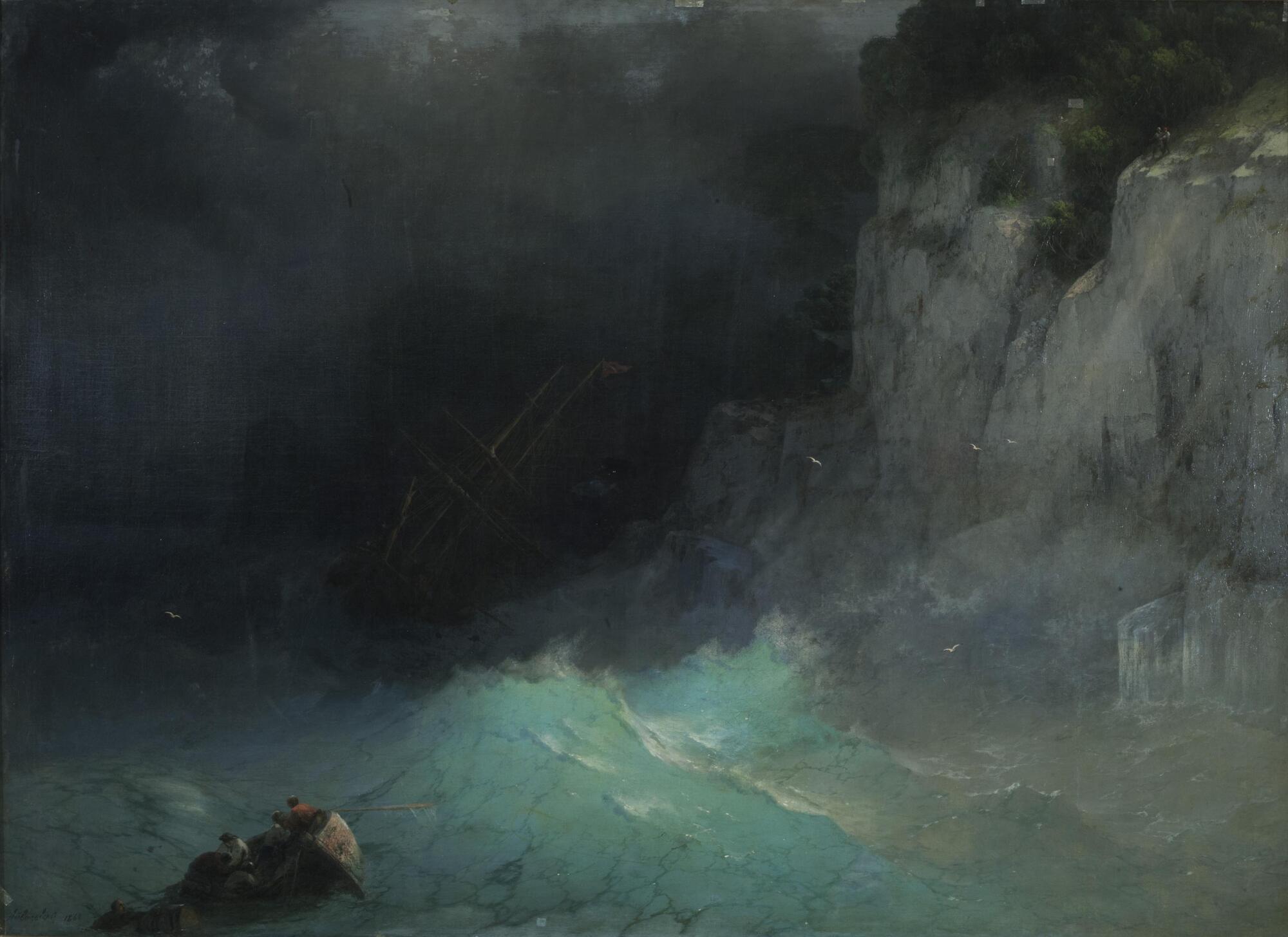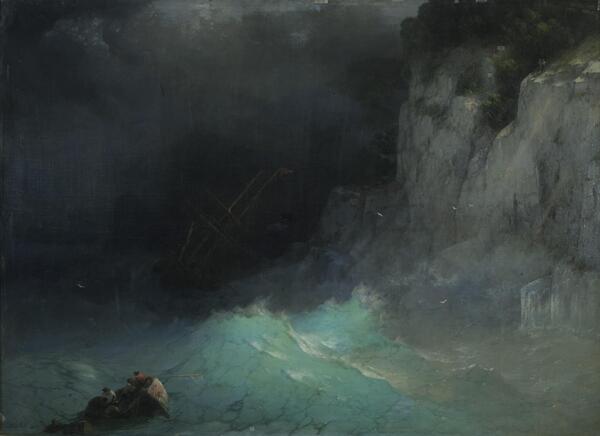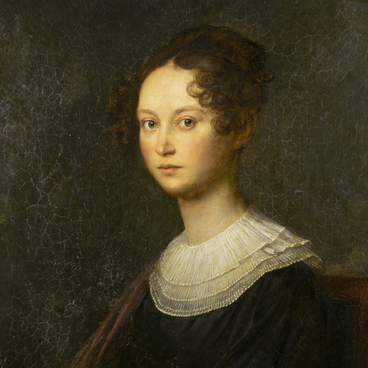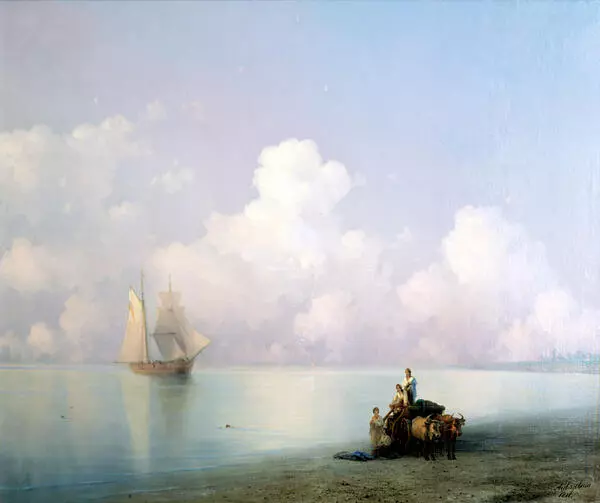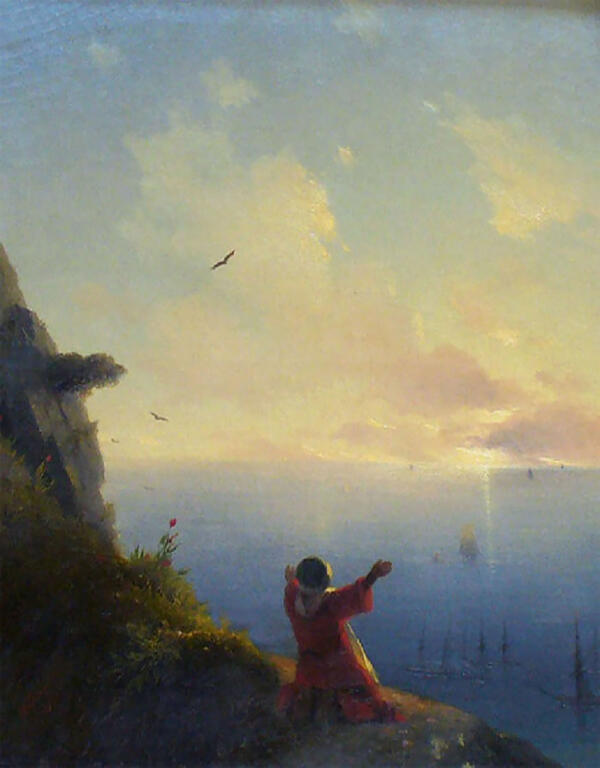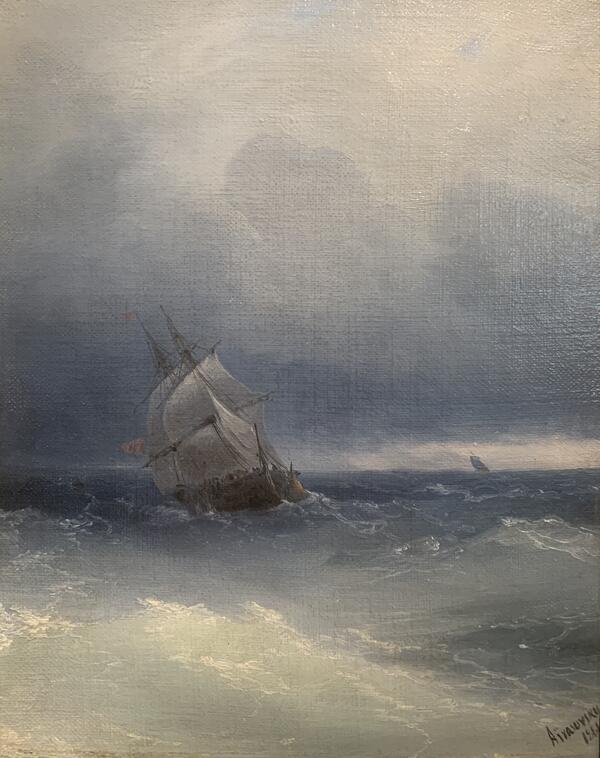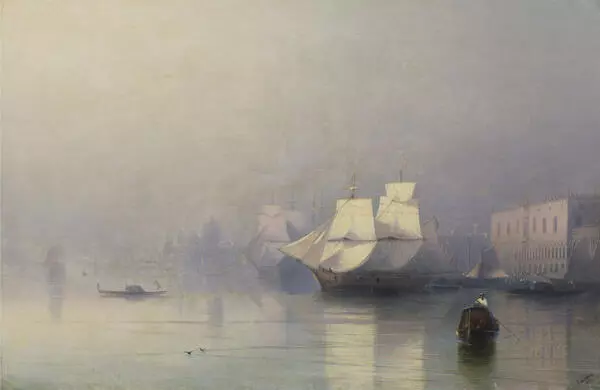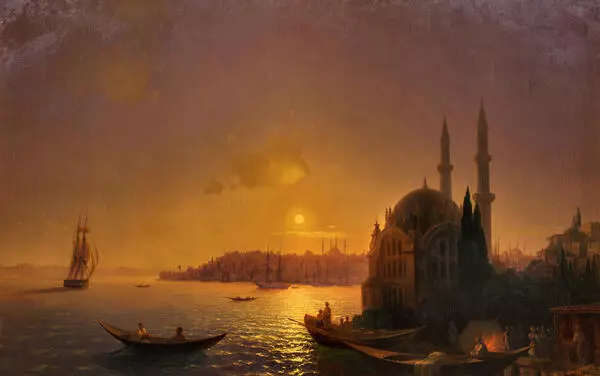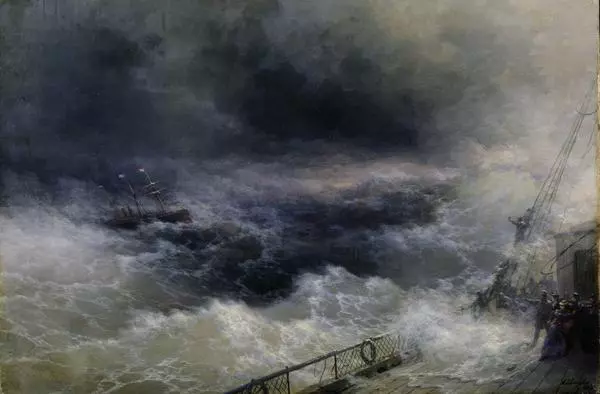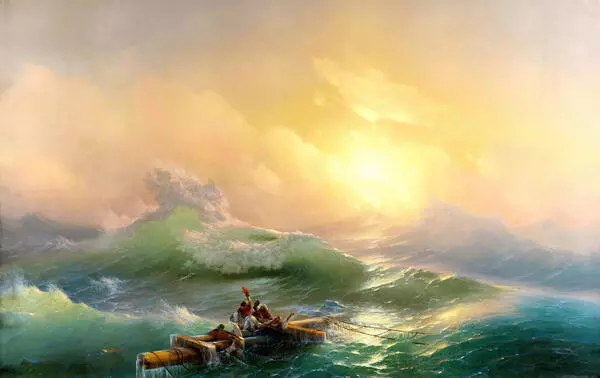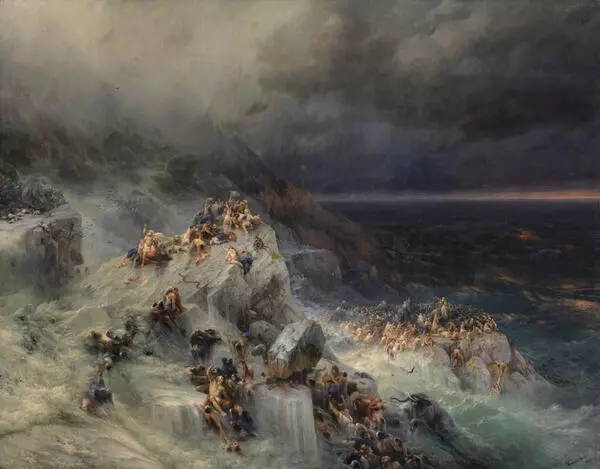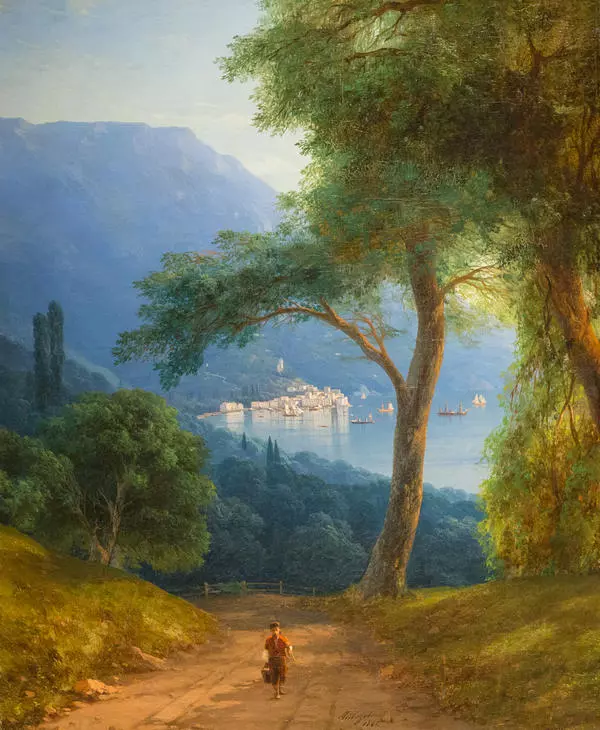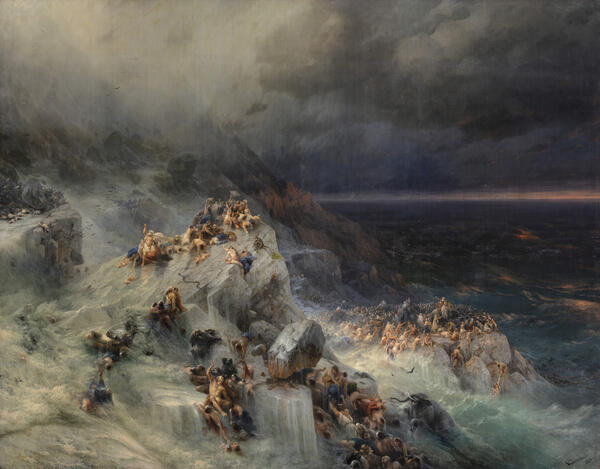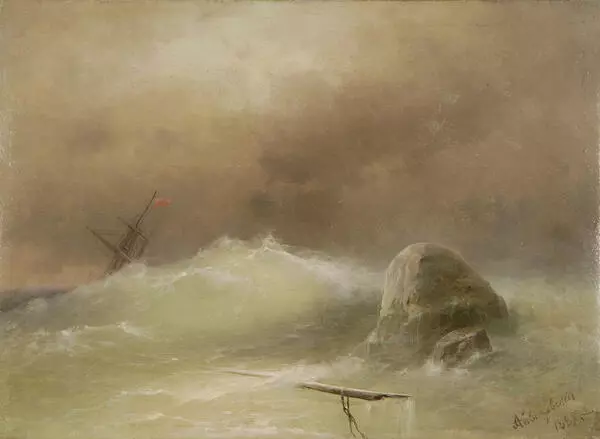In 1844, a ship sailing from England to Spain got caught in a violent storm. The marine artist Ivan Aivazovsky was also on board. Thereafter, news about the death of the artist appeared in the European press, but it turned out to be a mistake. Many passengers were deeply worried about the consequences of the terrible event. However, according to Aivazovsky, ‘fear did not suppress the ability to perceive and retain in memory the impression made by the storm, it being like a wondrous living picture.’
Aivazovsky’s painting “Storm” is exhibited at the Chelyabinsk State Museum of Fine Arts. It depicts two raging elements, sky and water, which seemed to unite against a man. The huge sailing ship heeled over from the squally wind. Like other canvases, the artist did not paint this work from life. He sketched out schematic drawings by the sea, and then restored the whole picture from memory in his workshop.
20 years later, Aivazovsky painted a painting similar in plot — “The Wrath of the Seas”. He depicted a stormy sea near the rocks, their outlines are hardly seen in the darkness. Waves hit the high shore, and lightning flashes in the sky. In the foreground, there is a small boat with people who managed to survive the shipwreck. One of them points in the direction of land, the others are paddling.
The artist was criticized more than once for the repetition of the plots. Fyodor Dostoevsky compared the excessive colorfulness, theatricality of landscapes and the speed with which Aivazovsky painted with the literary productivity of Alexander Dumas père. The artist noted: “I deliberately repeat the plots in order to correct the previous, sometimes noticed only by me, shortcomings.”
Nevertheless, at the same time, Dostoevsky recognized the talent of the artist, “The storm near Yevpatoria of Aivazovsky is as amazingly good as all his storms, and here he is the master without rivals, here he is quite an artist. There is rapture in his storm, there is that eternal beauty that amazes the viewer in a living, real storm.”
The artist Ivan Kramskoy wrote, “Aivazovsky, no matter what is said about him, is a big star, in any case; and not only here, but in the history of art in general”. Emperor Nicholas I even declared, “Whatever Aivazovsky paints, I shall buy it.”
Aivazovsky’s painting “Storm” is exhibited at the Chelyabinsk State Museum of Fine Arts. It depicts two raging elements, sky and water, which seemed to unite against a man. The huge sailing ship heeled over from the squally wind. Like other canvases, the artist did not paint this work from life. He sketched out schematic drawings by the sea, and then restored the whole picture from memory in his workshop.
20 years later, Aivazovsky painted a painting similar in plot — “The Wrath of the Seas”. He depicted a stormy sea near the rocks, their outlines are hardly seen in the darkness. Waves hit the high shore, and lightning flashes in the sky. In the foreground, there is a small boat with people who managed to survive the shipwreck. One of them points in the direction of land, the others are paddling.
The artist was criticized more than once for the repetition of the plots. Fyodor Dostoevsky compared the excessive colorfulness, theatricality of landscapes and the speed with which Aivazovsky painted with the literary productivity of Alexander Dumas père. The artist noted: “I deliberately repeat the plots in order to correct the previous, sometimes noticed only by me, shortcomings.”
Nevertheless, at the same time, Dostoevsky recognized the talent of the artist, “The storm near Yevpatoria of Aivazovsky is as amazingly good as all his storms, and here he is the master without rivals, here he is quite an artist. There is rapture in his storm, there is that eternal beauty that amazes the viewer in a living, real storm.”
The artist Ivan Kramskoy wrote, “Aivazovsky, no matter what is said about him, is a big star, in any case; and not only here, but in the history of art in general”. Emperor Nicholas I even declared, “Whatever Aivazovsky paints, I shall buy it.”
